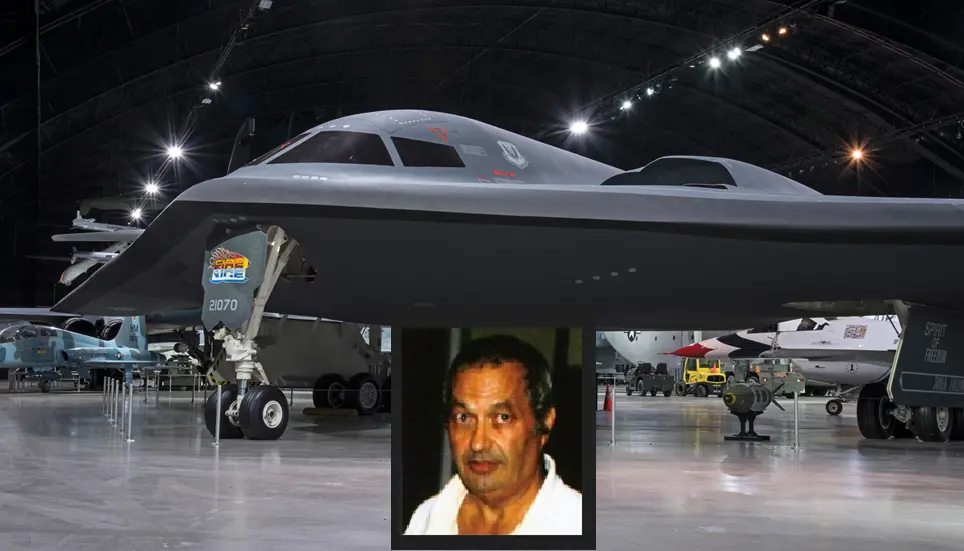
Noshir Gowadia, an Indian-born aerospace engineer, helped design the B-2 Spirit stealth bomber before selling its secrets to China
The Architect of Invisibility: Gowadia’s Rise in Aerospace History
Noshir Gowadia – Born in Mumbai in 1944, Noshir Sheriarji Gowadia immigrated to the United States in the 1960s and quickly rose through the ranks of American aerospace engineering. By the late 1980s, he had become a key figure at Northrop (now Northrop Grumman), where he played a pivotal role in designing the B-2 Spirit stealth bomber, a revolutionary aircraft capable of evading radar and delivering nuclear payloads undetected.
Table of Contents
Gowadia was credited with conceptualizing the stealth propulsion system that minimized the bomber’s infrared signature, making it nearly invisible to heat-seeking missiles. He proudly referred to himself as the “father of the technology that protects the B-2 from heat-seeking missiles”.
After leaving Northrop in 1986, Gowadia continued to work as a defense consultant, maintaining his top-secret security clearance and contributing to classified projects for the CIA and other agencies. But behind the scenes, a dangerous transformation was underway.
The Fall: Selling Secrets to the Highest Bidder
In 2005, federal investigators arrested Gowadia at his home in Hawaii. The charges? Espionage, arms export violations, and unauthorized transmission of national defense information. According to the U.S. Department of Justice, Gowadia had sold classified B-2 stealth technology to China, as well as shared sensitive information with individuals in Germany, Israel, and Switzerland.
The most damning evidence revealed that Gowadia had helped the Chinese government design a low-observable cruise missile exhaust system, enhancing their stealth capabilities. He admitted to transmitting classified data to “establish technological credibility with potential customers for future business”.
The scope of the betrayal was staggering. Prosecutors presented emails, financial records, and testimony showing that Gowadia had personally profited from his espionage, receiving payments from foreign governments in exchange for U.S. military secrets. His actions were deemed a direct threat to national security, potentially enabling adversaries to neutralize America’s stealth advantage.
Legacy of Damage: A Wake-Up Call for National Security
In 2011, Gowadia was sentenced to 32 years in federal prison, convicted on 14 of 17 counts, including conspiracy and unauthorized communication of classified information. The case sent shockwaves through the defense community and raised urgent questions about insider threats, security clearance protocols, and the vulnerabilities of even the most advanced military programs.
The fallout extended beyond the courtroom. Satellite imagery and defense analysis suggest that China’s rapid advancements in stealth aircraft, particularly its flying-wing designs, may have been accelerated by the information Gowadia provided. If true, the betrayal not only compromised U.S. defense capabilities but also reshaped the global balance of air power.
Today, Gowadia’s story stands as a cautionary tale: a brilliant mind corrupted by ego and greed, whose actions undermined the very nation that gave him the platform to innovate. His journey from aerospace pioneer to convicted spy is a stark reminder that the greatest threats to national security can sometimes come from within.
Conclusion:
The saga of Noshir Gowadia is one of brilliance, betrayal, and irreversible damage. As nations race to dominate the skies with stealth and AI-driven warfare, the lessons from this espionage scandal remain painfully relevant. In a world where information is power, guarding that power has never been more critical.
Stay updated with the latest news on Rapido Updates. Keep yourself updated with The World, India News, Entertainment, Market, Automobile, Gadgets, Sports, and many more
Missiles and Meltdown: Iran Strikes Israel as Arak Reactor Bombed in Escalating War